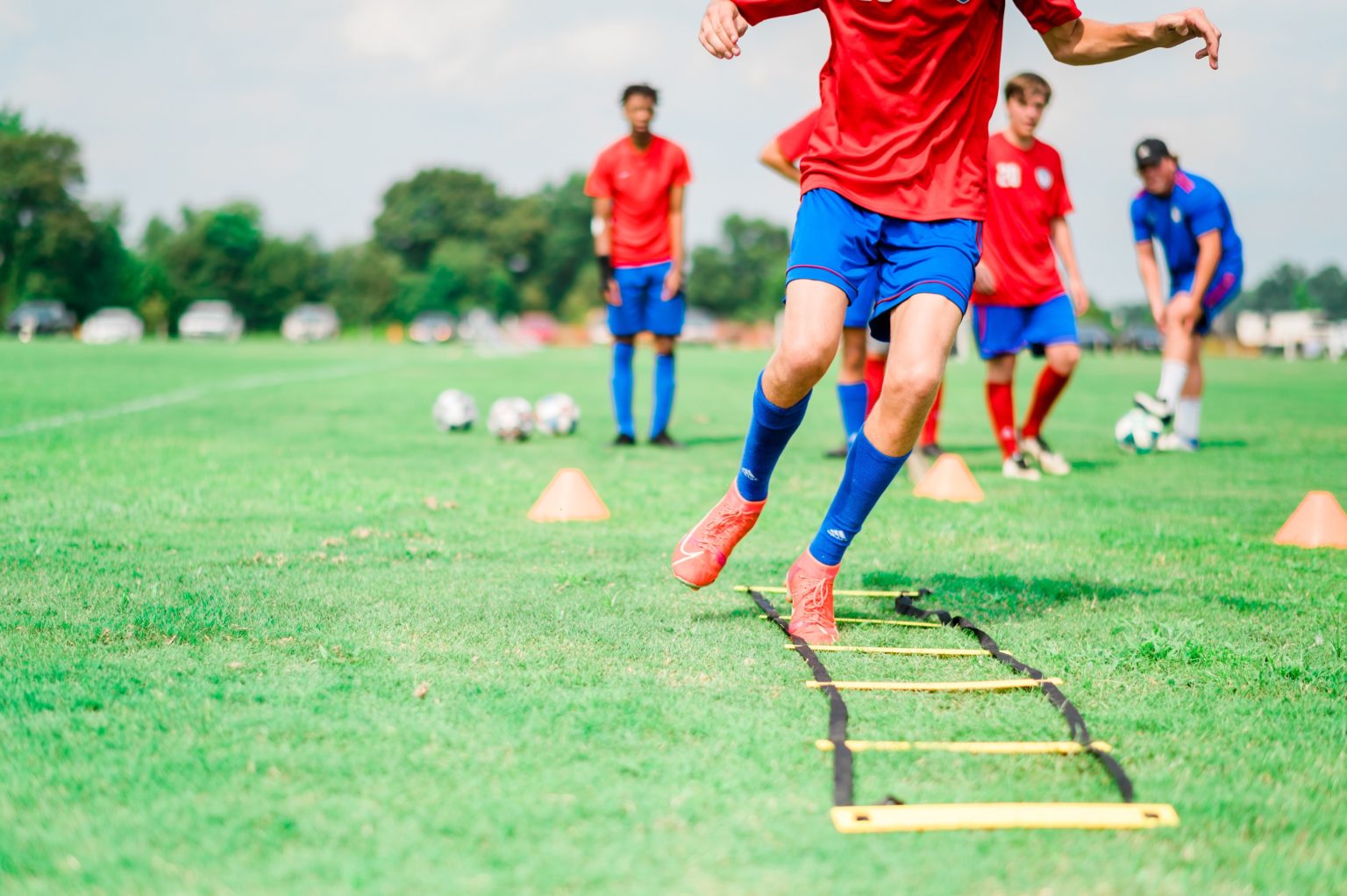U7/U8 Player Development Program
NRFA’s U7/U8 Program is not focused on wins vs. losses, rather we place emphasis on player development. Therefore, we implement what we refer to as the Player Development Program (PDP) for our U7/U8 age groups. Each team will be coached by a volunteer parent coach with guidance from the Recreation Director. The teams will be selected at the start of the season and will be balanced by skill, so that all teams are evenly matched.
PRACTICE SESSIONS
The U7/U8 program will practice one day a week. On these days, players will rotate through a few skills activities, and then participate in a small-sided game. Each group will be split in half using colored pinnies, and play an actual game, going to goal.
GAMES/SCRIMMAGES
On Game Day, teams will play one game against another team.
Why No Goalkeeper?
Goalkeeping, as it relates to the adult version of soccer, requires a combination of motor skills, athletic talent and decision-making. A goalkeeper is not utilized in the U5-U8 small-sided game because:
- Goalkeepers must be field players first. Prior to specializing as goalkeepers, children must learn the broad parameters of "play". This is difficult to do when they hide beneath the crossbar and between the posts.
- Goalkeepers must possess field-playing skill. This is particularly true since the laws governing the 11-a-side game have been changed to prohibit the goalkeeper from using handling skills to receive balls passed by teammates.
- Psychological maturity is necessary in order to function as a goalkeeper.
- The peripheral vision and hand eye coordination at these ages are usually not developed to the point necessary to effectively play goalkeeper.
According to The Official US Youth Soccer Coaching Manual,
"When to begin as a goalkeeper is a question asked by many coaches. The authors [Dr. Thomas Fleck, Dr. Ronald W. Quinn, Dr. David Carr, William Buren, Virgil Stringfield] believe that initiating goalkeeping in games prior to age nine is inappropriate. Children should be exposed to body movements that simulate what goalkeepers do, but to put them under the pressure of being a goalkeeper before they have developed some basic psychomotor and cognitive skills is inappropriate."
Small-Sided Games
JUSA follows the United States Youth Soccer Association’s recommendations for the use of small sided games (SSG) for U12 and below. The importance of this format of play in youth soccer development is evidenced in a study conducted by the German Football Association, in conjunction with Sports University of Cologne on 6-10 years old. Results of this study in their entirety can be viewed clicking here
Characteristics of Small-sided Games
More opportunities to play the ball. The fewer players on the field, the more possible times a player will come in contact with the ball. In fact, players will find they have no choice; the ball will quickly find them!
More opportunities to score. Many players in an 11v11 game are not inclined to seek the goal, because they are so far away or because of defensive restraints.
More opportunities to scheme. As we play we must constantly change and adapt to our surroundings. This challenge is the basis for tactics. How do we solve the puzzle?
More opportunities to coach. The small-sided game allows coaches a perfect opportunity to observe and analyze the individual and collective responses of players under quick game-like conditions. Are players comfortable with the ball? Are they confident in defense? How well do they adapt to the unexpected? Do they recognize goal-scoring opportunities?
US Youth Soccer recommends small-sided games for U12 and below. More information about the importance of the small-sided game in youth soccer development can be found at: http://www.usyouthsoccer.org/coaches/SmallSidedGames/
.jpg)
.jpg)
